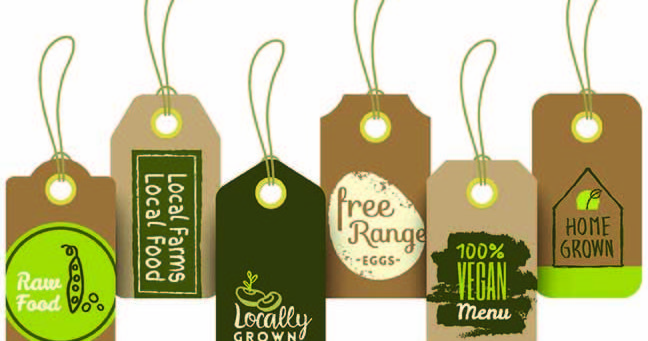
Trending
Language of food packaging: The Health Halo Effect - The hidden language of food packaging
By Robert Michon
August, 2017
Selling food is a business. And just as with any other business, the competition between food companies is fierce, and they want you to leave the grocery store with their products in hand, not those of their competitors. That end goal has led to some creative marketing tactics that use visual connotations and buzzwords to suggest that what you’re buying is healthier than it actually is. This tactic is known as the Health Halo Effect, and it’s something you can learn to recognize so that you are able to make informed, consumer-savvy decisions about which foods are right for you.
What Is the Health Halo Effect?
Although food labels and packaging are regulated by the laws of the Canadian Food Inspection Agency, the federal government isn’t able to keep tabs on all of the subtle ways that marketers use language and psychology to convince us that their products “are the best choice for our health. The Health Halo Effect occurs in these areas of ambiguity in which words can be interpreted to mean many different things. Because of that ambiguity, these companies aren’t technically lying or printing false information; they’re merely being vague and allowing you to draw your own conclusions.
Misleading Buzzwords
One of the most common tools used to create the Health Halo Effect are misleading buzzwords. You’ve probably seen most of them on grocery store shelves or restaurant menus, but have you ever thought about what they actually mean? The following definitions might surprise you:
Organic, Natural & GMO-Free
Words like organic, natural and GMO-free conjure images of health and wellness. After all, if something comes naturally from the earth, how bad could it be? It turns out the bar is set quite low for products that are able to use these words. Ingredients such as potatoes, salt and vegetable oil can all come to us naturally from the earth without chemical additives or biological manipulation, but organic potato chips are still potato chips and wouldn’t count as a healthy food option among many nutritionists, as they lack significant nutritional value. The truth is that natural and healthy aren’t always synonymous.
Whole Grain & Real Fruit
When something is labelled with words like “whole grain” or “real fruit,” pay attention to whether or not the package lists the percentages of those ingredients. The product may contain only a small amount of whole grains or real fruit to justify the label, while the bulk of the ingredients are low-cost, low-nutrition additives. Look for the 100% next to the claim (or whatever percentage you’re comfortable with) to make sure you’re choosing the product you actually want.
Low-Fat & Fat-Free
Low-fat or fat-free foods are incredibly popular for those looking to cut calories. But fat isn’t the only high-calorie aspect of food. Just because something is labelled as low-fat doesn’t mean that the sugar and carbohydrate content is low, too. In fact, some low-fat foods have increased sugar content to compensate for the flavour lost when reducing the fats. Always remember that calories come in many different forms.
Free-Range, Artisanal & Local
Newcomers to buzzword labelling include terms like free-range, artisanal and local. By now, you might be able to tell why these words can trick you. They all sound positive, but they have little in the way of actual informational value. Free-range livestock are thought to produce better, more ethically produced meat. But the term free-range says nothing about how long the animal spent outdoors or about any other conditions under which it was raised. Artisanal simply means that the product was made by a professional. Similarly, the term local indicates that the product was made nearby, but not under what conditions.
The presence of these buzzwords on your food doesn’t guarantee that the product is either healthy or unhealthy, so always do your research and use your judgement to determine whether you’re buying the product with the right nutritional options for you.
Deceptive Packaging
Ever noticed how many health foods come in green packaging? Well, it’s not an accident. There is a link in our minds between the colour green and the idea of health. Since marketers know this, they can subtly influence you into thinking that a green box means healthier contents.
The same is true of colourful statistics and diagrams on the front of the package. Companies aren’t required to put this information on their products, but the mere act of including a chart, regardless of whether or not you know how to read it, can convince customers of its health value. Often, these charts will contain only positive information and leave the negative information out.
Ingredient Lists
Canadian law requires all food packaging to contain a list of ingredients, but this list can be manipulated in surprising ways. By law, ingredients are listed in order of quantity and should be transparent to the consumer. But there are ways to recast the information to the marketer’s advantage.
For example, instead of listing “sugar” once as a single ingredient, you might find it listed multiple times in its different forms, perhaps as sucrose, maltose and corn syrup. All of these ingredients are different kinds of sugar, but by splitting them up, the manufacturer is able to put them lower down on the list, making it seem like sugar isn’t a primary ingredient at all.
Also pay attention to the serving size. It might sound like an incredible stroke of luck to find a box of cookies that contains only one gram of fat, but that usually means one gram of fat per serving. The box might list a serving to be as small as a single cookie, meaning you’ll have to do some math if you want to know the truth about what you’re eating. t8n
Fun Fact
Canada is one of the only western nations that doesn’t require GMO foods to be
labelled as such. This is because all genetically modified foods in Canada must go through a testing and approval process before they are deemed safe to eat.
Did You Know?
While nutritional ingredients must be listed on food packaging, information about fertilizer, pesticides and other “incidental ingredients” does not. The Government of Canada regulates and monitors the use of these ingredients to ensure consumer safety.
- artisanal
- fat free
- food
- free range
- GMO-free
- health halo
- labels
- local
- low fat
- natural
- organic
- real fruit
- tags
- Whole grain












